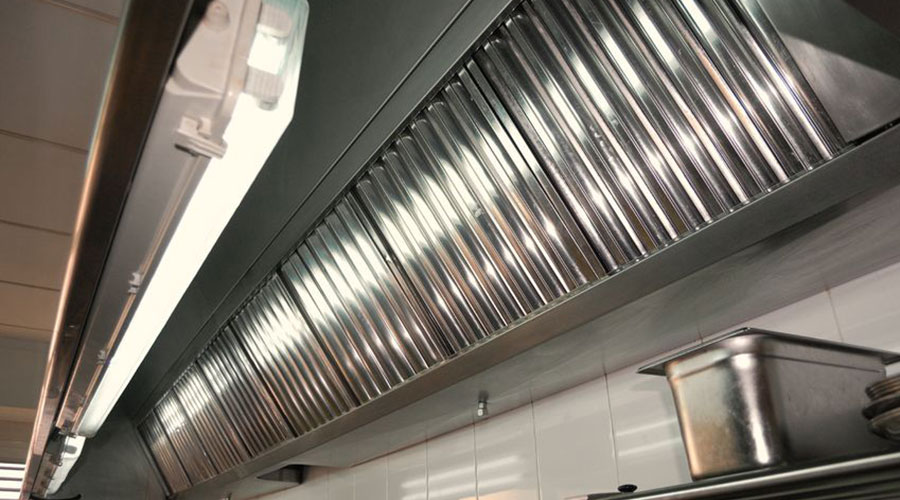Energy savings for ventilation
Best Available Technique (BAT)
BAT is to optimise heating, ventilation and air conditioning systems.
Brief technical description
An existing ventilation system can be improved at three levels:
- optimising the operation of the installation
- introducing a maintenance and monitoring plan for the installation
- investment in more efficient technical solutions.
Energy savings can be achieved in few ways:
- Optimise the number, shape and size of intakes
- Manage airflow, including considering dual flow ventilation
- Stop or reduce ventilation where possible
- Use automatic control systems and integrate with centralised technical management systems
- Check system is balanced
- Ensure system is airtight, check joints
- Integration of air filters into air duct system and heat recovery from exhaust air (heat exchangers)
- Optymalize air system design:
- ducts are of a sufficient size
- circular ducts
- avoid long runs and obstacles such as bends, narrow sections
Note that improving ventilation system efficiency sometimes also brings improvements in:
- the comfort and safety of personnel
- product quality.
Achieved environmental benefits
It is estimated that 10 % of the electricity consumption in companies is by ventilation systems. Where there is also air conditioning, ventilation and air conditioning can take up an even larger share of the corporate energy budget.
Cross-media effects
None reported.
Operational data
FANS:
Fans are the principal source of electricity consumption in the installation. Their type, size and controls are major factors from the point of view of energy. Note: choosing a high efficiency fan of the correct size may mean that a smaller fan can be chosen and savings on the purchase price can be obtained. When designing or modifying an installation, key issues are:
- a fan with a high efficiency rating: the maximum efficiency of fans is generally between 60 and 85 % depending on the type of fan. Manufacturers are developing ranges of even more efficient fans
- a fan designed to operate as close as possible to its optimal rate: with a single fan, efficiency can vary according to its operating rate. It is therefore essential to choose the correct size of fan for the installation, so that it operates as close as possible to maximum efficiency
THE AIR SYSTEM:
The design of an air system must meet certain conditions in order to be energy efficient:
- ducts must be sufficiently large in diameter (a 10 % increase in diameter can produce a 72 % reduction in the power absorbed)
- circular ducts, which offer less pressure loss, are better than rectangular ducts of an equal section
- avoid long runs and obstacles (bends, narrower sections, etc.)
- check that the system is airtight, particularly at joints
- check that the system is balanced at the design stage, to make sure all ‘users’ receive the necessary ventilation. Balancing the system after it has been installed means that single leaf dampers have to be installed in some ducts, increasing losses in pressure and energy
ELECTRIC MOTORS (and coupling with fans):
Choose the correct type and size of motor
MANAGING AIRFLOW:
Airflow is a basic parameter when it comes to energy consumption by ventilation systems. For example: for a 20 % reduction in flow, 50 % less power is consumed by the fan. Most ventilation installations do not have to operate constantly at their maximum rate. So it is important to be able to adjust the fan operating speed in accordance with, e.g:
- production (quantity, product type, machine on/off, etc.)
- period (year, month, day, etc.)
- human occupation of the work area
It is essential to analyse needs using presence detectors, a clock, and process-driven controls, and to design a controlled ventilation installation.
‘Dual flow’ ventilation, which combines blowing (the intake of fresh air) with extraction (the removal of polluted air), provides better airflow control and is more easily controlled, e.g. by a process air conditioning and energy recovery management system. Installing automatic controls can provide a method of controlling the ventilation system using various (measured, defined, etc.) parameters and optimising its operation at all times.
There are many techniques for varying airflow in line with demand, but they are not all equally energy efficient:
- electronic speed controls can be used to adapt the rate of operation of fans whilst optimising energy consumption by the motor, producing significant energy savings
- changing the blade angle of propeller fans also provides substantial energy savings
ENERGY RECOVERY SYSTEM:
When ventilated premises have an air conditioning system, the renewed air needs to be reconditioned, which consumes large amounts of energy. Energy recovery systems (exchangers) can be used to recover some of the energy contained in the polluted air expelled from the work area. When choosing an energy recovery system, check the following three parameters:
- thermal efficiency
- pressure loss
- behaviour when fouled
AIR FILTERING:
An air filter allows the air in the ventilated premises to be re-used. The of air to be renewed and reconditioned is thereby reduced, providing significant energy savings. Opting for an air filter when the ventilation installation is designed is advisable because the extra cost at that stage will be relatively small compared with its installation at a later stage. It is essential to check that the pollutants that remain can be recycled.
Where this solution is possible, it is important to know the following parameters:
- recycling efficiency
- pressure loss
- behaviour when filter is fouled
Applicability
Applicable to all new systems or when upgrading
Economics
In most audited installations, potential energy savings of up to 30 % of consumption have been detected. There are many possible actions giving a return on investment often within 3 years.
Driving force for implementation
- health and safety conditions at work
- cost savings
- product quality.
Example plants
Widely used.
 EE Metal
EE Metal




